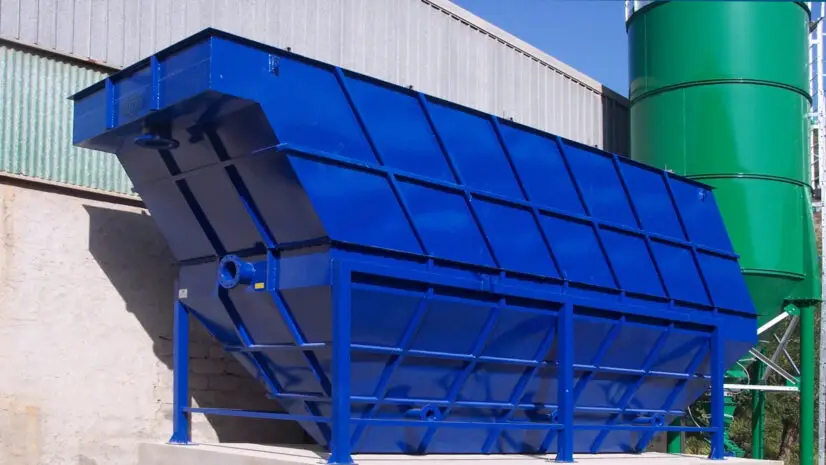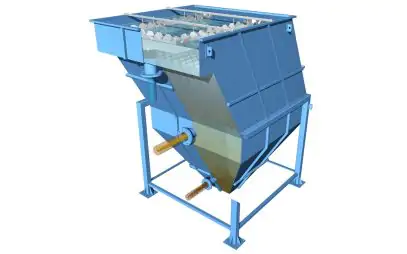Lamella-Pack Decanters: Applications

Modular, highly efficient and economically convenient: they are a classic solution but still widely used in the removal of even coarse suspended solids. So, what are the main applications of lamella-pack decanters? Let’s look at some of them together.
1. Strengthening existing biological clarifiers
Biological wastewater treatment plants that require upgrading after a certain period of time are becoming more and more frequent. Decantation is the phase that most manifests this need and is also the one that requires the greatest number of setups.
Lamellar pack decanters with containment frame have been developed to meet these needs. They allow for rapid installation inside existing sedimentation tanks, increasing their usable surface area without major changes to the structure of the clarifier itself. The same type of lamellar packs has also been used in newly built concrete tanks. Thanks to their particular structure, their application allows for large decantation surfaces to be obtained in small layouts.
2. Decantation of chemical-physical sludge
Process water from manufacturing companies can be identified by the characteristics it can assume depending on the type of production and the use made of it in the production cycle. The treatment of this water occurs through the dosing of chemical substances, which vary depending on the substances to be removed. The sludge produced by the chemical treatment is promptly removed by decantation with lamellar pack clarifiers.
In the monoblock version they allow:
- ease of shipping and installation,
- extremely small layout,
- high decantation surface (˜ 20 m2/m3),
- modularity,
- low energy consumption.
The different construction materials allow optimal adaptation to the characteristics of the effluent. The simplicity of operation and limited maintenance requirements have simplified the management operations of the plant with significant economic advantages for the end user.
Tell us your needs3. Biological decantation of sludge
In small biological wastewater treatment plants, the monoblock lamellar decanter has often been installed in place of traditional decantation systems. The monoblock version, in fact, does not require any civil engineering structure and allows for rapid installation and equally rapid start-up.
The lamellar pack has been specifically designed taking into account the type of sludge to avoid any risk of clogging. Other advantages that have favored the choice of the lamellar decanter: the modularity of the system, the reduction of the layout, the ease of management and operation of the plant.
4. Precipitation of metal hydrates
One of the most widespread industrial wastewater treatment processes is aimed at removing metals. The separation of metals occurs by precipitation: by appropriately increasing the pH of the effluent water, the formation of metal hydrates is obtained, which separate from the water by precipitation.
Lamellar pack sedimentation tanks have been used to accelerate the phenomenon of separation of metal hydrates as an alternative to traditional sedimentation systems, compared to which they have the advantage of ensuring small dimensions and rapid installation.
Ask for InformationResources
Needs of wastewater treatment
Discover the solution for all needsComparing different technologies
Find out all the different technologiesFind out more
All technical articlesOur Newsletter
Sign up for the MITA Water Technologies newsletter: stay up-to-date on systems for municipal and industrial wastewater treatment and filtration.
